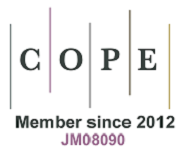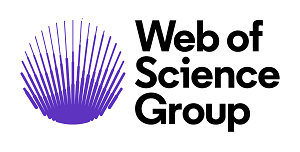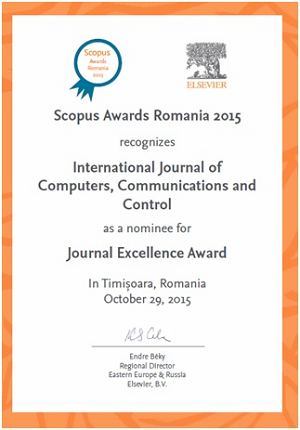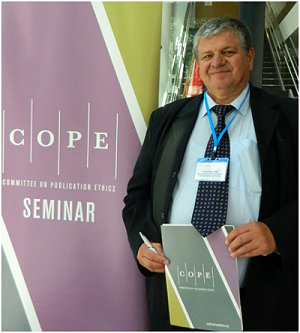Prioritising Strategies to Improve Girls’ Access to Quality Education: A Hybrid Hyperbolic Fuzzy MCDM Framework with Human and AI Expertise
DOI:
https://doi.org/10.15837/ijccc.2025.6.7240Keywords:
Girls’ Education, Soft Cluster Rectangle, Hyperbolic Fuzzy Sets, Generative AI, Hybrid Decision Framework.Abstract
Access to quality education for girls is one of the key targets of the United Nations’ Sustainable Development Goals. This study has two major goals. First, this study proposes a hybrid decision framework that integrates hyperbolic fuzzy sets, multi-attitudinal variance, soft cluster rectangle, and integrated simple weighted sum product methods to prioritise strategies that improve access to quality education for girls. Second, this study explores the use of generative AI expertise in a multi-criteria decision-making framework that traditionally uses only human experts. The findings reveal "Effectiveness" to be the most important criterion when assessing the strategies and "Health and Hygiene Interventions" to be the most prioritised strategy. The findings also show a divergence of opinions between the AI experts and human experts in the extremes and alignment of opinions in the non-extremes. The study serves as a foundation for future research on integrating generative AI into decision-making frameworks while also providing policymakers with a structured approach to prioritising strategies for improving girls’ education.
References
D. Adhikari, K. H. Gazi, B. C. Giri, F. Azizzadeh, and S. P. Mondal, Empowerment of women in India as different perspectives based on the AHP-TOPSIS inspired multi-criterion decision making method, Results in Control and Optimization, vol. 12, no. 1, article no. 100271, 2023. https://doi.org/10.1016/j.rico.2023.100271
D. Adhikari, K. H. Gazi, A. Sobczak, B. C. Giri, S. Salahshour, and S. P. Mondal, Ranking of Different States in India Based on SustainableWomen Empowerment Using MCDM Methodology Under Uncertain Environment, Journal of Uncertain Systems, vol. 17, no. 4, article no. 2450010, 2024. https://doi.org/10.1142/S1752890924500107
B. A. A. Akanbang, C. Aneleru, and M. A. Aziabah, Incentives and Girl Child Education in Ghana: An Examination of CAMFED's Support Scheme on Enrollment, Retention and Progression in Garu-Tempane District, Sage Open, vol. 13, no. 3, article no. 12, 2023. https://doi.org/10.1177/21582440231183904
K. Austrian, E. Soler-Hampejsek, B. Kangwana, Y. D. Wado, B. Abuya, and J. A. Maluccio, Impacts of two-year multisectoral cash plus programs on young adolescent girls' education, health and economic outcomes: Adolescent Girls Initiative-Kenya (AGI-K) randomized trial, BMC Public Health, vol. 21, no. 1, article no. 2159, 2021. https://doi.org/10.1186/s12889-021-12224-3
E. Ayçin, M. Çerçi, and E. Sonugelen, An Evaluation of Women's Human Development Level using Multi Criteria Decision-Making Methods: A Case Study of OECD Countries, Economic Computation and Economic Cybernetics Studies and Research, vol. 58, no. 4, pp. 109-128, 2024. https://doi.org/10.24818/18423264/58.4.24.07
R. M. Bădîrcea, A. G. Manta, N. M. F. Doran, and F. L. Manta, Linking the government expenditures to the achievement of the Europe 2020 strategy indicators. Evidence from Central and Eastern European Countries, Technological and Economic Development of Economy, vol. 28, no. 3, pp. 694-715, 2022. https://doi.org/10.3846/tede.2022.16526
A. K. Banik and P. Dutta, An efficient decision making method based on hyperbolic fuzzy environment with new score function and its application in determining crime prone zones, International Journal of Machine Learning and Cybernetics, special issue. Pretraining: Foundation, Frontiers and Applications, pp. 1-27, 2024. https://doi.org/10.1007/s13042-024-02404-z
O. Ban, L. Droj, D. Tuse, G. Droj and N. Bugnar, Data Processing by Fuzzy Methods in Social Sciences Researches. Example in Hospitality Industry, International Journal of Computers Communications & Control, vol. 17, no. 2, article no. 4741, 2022. https://doi.org/10.15837/ijccc.2022.2.4741
D. Burde and L. L. Linden, Bringing Education to Afghan Girls: A Randomized Controlled Trial of Village-Based Schools, American Economic Journal: Applied Economics, vol. 5, no. 3, pp. 27-40, 2013. https://doi.org/10.1257/app.5.3.27
K. Chouhan, R. Sharma, and S. Pareek, Knowledge and Attitude Regarding "Beti Bachao, Beti Padhao Yojana" among Young and Aged Rural Adults: A Cross-Sectional Study, Journal of Datta Meghe Institute of Medical Sciences University, vol. 17, no. 2, pp. 350-353, 2022. https://doi.org/10.4103/jdmimsu.jdmimsu_275_20
S. A. Churchill, N. Iqbal, S. Nawaz, and S. L. Yew, Unconditional cash transfers, child labour and education: theory and evidence, Journal of Economic Behavior & Organization, vol. 186, pp. 437-457, 2021. https://doi.org/10.1016/j.jebo.2021.04.012
M. Divsalar, M. Ahmadi, M. Ghaedi, and A. Ishizaka, An extended TODIM method for hyperbolic fuzzy environments, Computers & Industrial Engineering, vol. 185, no. 1, article no. 109655, 2023. https://doi.org/10.1016/j.cie.2023.109655
P. Dutta and G. Borah, Construction of Hyperbolic Fuzzy Set and its Applications in Diverse COVID-19 Associated Problems, New Mathematics and Natural Computation, vol. 19, no. 1, pp. 217-288, 2023. https://doi.org/10.1142/S1793005723500072
A. Eble and F. Hu, Child beliefs, societal beliefs, and teacher-student identity match, Economics of Education Review, vol. 77, no. 1, article no. 101994, 2020. https://doi.org/10.1016/j.econedurev.2020.101994
D. K. Evans, C. Gale, and K. Kosec, The educational impacts of cash transfers in Tanzania, Economics of Education Review, vol. 92, no. 1, article no. 102332, 2023. https://doi.org/10.1016/j.econedurev.2022.102332
D. K. Evans and F. Yuan, What We Learn about Girls' Education from Interventions That Do Not Focus on Girls, The World Bank Economic Review, vol. 36, no. 1, pp. 244-267, 2022. https://doi.org/10.1093/wber/lhab007
N. Fiala, A. Garcia-Hernandez, K. Narula, and N. Prakash, Wheels of Change: Transforming Girls' Lives with Bicycles, 2022. Available at: https://www.jstor.org/stable/resrep64287 https://doi.org/10.2139/ssrn.4114622
F.G. Filip, Automation and computers and their contribution to human well-being and resilience, Studies in Informatics and Control, vol. 30, no. 4, pp. 5-18, 2021. https://doi.org/10.24846/v30i4y202101
A. Gabus, and E. Fontela, World problems, an invitation to further thought within the framework of DEMATEL, Battelle Geneva Research Center, Geneva, Switzerland, vol. 1, no. 8, pp. 12-14, 1972.
T. Huang, W. Chen, V. Nalluri, and T. Huynh-Cam, Evaluating E-Teaching Adoption Criteria for Indian Educational Organizations Using Fuzzy Delphi-TOPSIS Approach, Mathematics, vol. 10, no. 13, article no. 2175, 2022. https://doi.org/10.3390/math10132175
C. L. Hwang, and K. Yoon, Methods for multiple attribute decision making, Multiple attribute decision making: methods and applications a state-of-the-art survey, vol. 186, no. 1, pp. 58-191, 1981. https://doi.org/10.1007/978-3-642-48318-9_3
M. Keshavarz-Ghorabaee, M. Amiri, E. K. Zavadskas, Z. Turskis, and J. Antucheviciene, Determination of Objective Weights Using a New Method Based on the Removal Effects of Criteria (MEREC), Symmetry, vol. 13, no. 4, article no. 525, 2021. https://doi.org/10.3390/sym13040525
R. Jha, R. Jha, and M. Islam, Transforming girls' education through social awareness and government interventions: a pathway to equality, Oxford Open Economics, vol. 4, no. 1, article no. odae041, 2025. https://doi.org/10.1093/ooec/odae041
J. Lim and J. Meer, Persistent effects of teacher-student gender matches, Journal of Human Resources, vol. 55, no. 3, pp. 809-835, 2020. https://doi.org/10.3368/jhr.55.3.0218-9314R4
H. Majhi and M. Mallick, Infrastructural development and enrollment in elementary education in Odisha, Economic Affairs, vol. 64, no. 2, pp. 377-385, 2019. https://doi.org/10.30954/0424-2513.2.2019.13
J. P. Mukhopadhyay, S. Mitra, S. Javadekar, and N. Mishra, Does Gender-Based Awareness Campaign Improve Girls' Educational and Learning Outcomes? Empirical Evidence from India, The Journal of Development Studies, vol. 60, no. 11, pp. 1774-1792, 2024. https://doi.org/10.1080/00220388.2024.2383428
U. Mukhopadhyay, Gender-neutral vs gender-specific education subsidy: effects on schooling and earning inequality, International Journal of Social Economics, vol. ahead-of-print, no. ahead-ofprint, pp. 1-17, 2024. https://doi.org/10.1108/IJSE-07-2023-0554
G. Nasuna, J. Arinaitwe, E. Barigye, and F. Kyayemagye, Effect of School Infrastructure on Pupil Enrolment in Universal Primary Education Schools: A Case of Mbarara City, Uganda, East African Journal of Education and Social Sciences, vol. 3, no. 2, pp. 155-165, 2022. https://doi.org/10.46606/eajess2022v03i02.0170
E. D. Peteros, S. C. Ypil, J. Vera, G. A. Alcantara, M. D. Fulgencio, D. B. Plando, and L. B. Jr, Effects of School Proximity on Students' Performance in Mathematics, Open Journal of Social Sciences, vol. 10, no. 1, pp. 365-376, 2022. https://doi.org/10.4236/jss.2022.101028
N. J. Pitchford, A. Chigeda, and P. J. Hubber, Interactive apps prevent gender discrepancies in early-grade mathematics in a low-income country in sub-Sahara Africa, Developmental Science, vol. 22, no. 5, article no. e12864, 2019. https://doi.org/10.1111/desc.12864
S. Prasad and V. Pandey, Wisdom of Generative AI crowd-Harnessing collective intelligence for startup idea evaluation, 2024. Available at: https://aisel.aisnet.org/cgi/viewcontent.cgi?article=1031&context=treos_icis2024
S. Psaki, N. Haberland, B. Mensch, L. Woyczynski, and E. Chuang, Policies and interventions to remove gender-related barriers to girls' school participation and learning in low- and middleincome countries: A systematic review of the evidence, Campbell Systematic Reviews, vol. 18, no. 1, article no. e1207, 2022. https://doi.org/10.1002/cl2.1207
S. Rajasekhar and S. Jaishree, An Exploratory Study on Internet Use and its Application by Underprivileged School Girls, Indian Journal of Educational Technology, vol. 2, no. I, pp. 1-20, 2020. Available at: https://journals.ncert.gov.in/IJET/article/view/314
T. L. Saaty, The analytic hierarchy process (AHP), The Journal of the Operational Research Society, vol. 41, no. 11, pp. 1073-1076, 1980.
V. Shah, H. Nabwera, B. Sonko, F. Bajo, F. Faal, M. Saidykhan, Y. Jallow, O. Keita, W. Schmidt, and B. Torondel, Effects of Menstrual Health and Hygiene on School Absenteeism and Drop-Out among Adolescent Girls in Rural Gambia, International Journal of Environmental Research and Public Health, vol. 19, no. 6, article no. 3337, 2022. https://doi.org/10.3390/ijerph19063337
D. Stanujkic, G. Popovic, D. Karabasevic, I. Meidute-Kavaliauskiene, and A. Ulutaş, An Integrated Simple Weighted Sum Product Method-WISP, IEEE Transactions on Engineering Management, vol. 70, no. 5, pp. 1933-1944, 2023. https://doi.org/10.1109/TEM.2021.3075783
Ž. Stević, D. Pamučar, A. Puška, and P. Chatterjee, Sustainable supplier selection in healthcare industries using a new MCDM method: Measurement of alternatives and ranking according to COmpromise solution (MARCOS), Computers & industrial engineering, vol. 140, no. 1, article no. 106231, 2020. https://doi.org/10.1016/j.cie.2019.106231
A. Ulutaş, A. Topal, D. Pamučar, Ž. Stević, D. Karabašević, and G. Popović, A New Integrated Multi-Criteria Decision-Making Model for Sustainable Supplier Selection Based on a Novel Grey WISP and Grey BWM Methods, Sustainability, vol. 14, no. 24, article no. 16921, 2022. https://doi.org/10.3390/su142416921
Progress towards the Sustainable Development Goals, 2024. Available at: https://unstats.un.org/sdgs/files/report/2024/SG-SDG-Progress-Report-2024-advancedunedited- version.pdf
M. Wang, J. Lu, X. Zhang, B. Wang, and L. Cao, Analysis of factors influencing women's participation in engineering education: An improved fuzzy DEMATEL approach, Computer Applications in Engineering Education, vol. 32, no. 4, article no. e22730, 2024. https://doi.org/10.1002/cae.22730
J.Wei, X.Wang, D. Schuurmans, M. Bosma, B. Ichter, F. Xia, E. Chi, Q. Le, and D. Zhou, Chainof- Thought Prompting Elicits Reasoning in Large Language Models, arXiv, 2023. Available at: http://arxiv.org/abs/2201.11903
H. Yamada and T. M. Vu, The number of toilets, toilet types, and school enrollment rates: Evidence from Cambodia, International Journal of Educational Development, vol. 112, no. 1, article no. 103194, 2025. https://doi.org/10.1016/j.ijedudev.2024.103194
N. Yıldırım and F. Köroğlu, Revisiting the Impact Evaluation of Women's Empowerment: A MCDM-Based Evaluation Indicator Selection Framework Proposal, Social Indicators Research, vol. 172, no. 1, pp. 121-145, 2024. https://doi.org/10.1007/s11205-023-03302-7
P. L. Yu, A Class of Solutions for Group Decision Problems, Management Science, vol. 19, no. 8, pp. 936-946, 1973. https://doi.org/10.1287/mnsc.19.8.936
S. Zakeri, D. Konstantas, P. Chatterjee, and E. K. Zavadskas, Soft cluster-rectangle method for eliciting criteria weights in multi-criteria decision-making, Scientific Reports, vol. 15, no. 1, article no. 284, 2025. https://doi.org/10.1038/s41598-024-81027-4
E. K. Zavadskas, D. Stanujkic, D. Karabasevic and Z. Turskis, Analysis of the simple WISP method results using different normalization procedures, Studies in Informatics and Control, vol. 31, no. 1, pp. 5-12, 2022. https://doi.org/10.24846/v31i1y202201
R. Zelezny-Green, 'Now I want to use it to learn more': using mobile phones to further the educational rights of the girl child in Kenya, Gender & Development, vol. 26, no. 2, pp. 299-311, 2018. https://doi.org/10.1080/13552074.2018.1473226
Additional Files
Published
Issue
Section
License
Copyright (c) 2025 Zenonas TURSKIS, Vaida, Abhishek, Raghunathan, Kattur

This work is licensed under a Creative Commons Attribution-NonCommercial 4.0 International License.
ONLINE OPEN ACCES: Acces to full text of each article and each issue are allowed for free in respect of Attribution-NonCommercial 4.0 International (CC BY-NC 4.0.
You are free to:
-Share: copy and redistribute the material in any medium or format;
-Adapt: remix, transform, and build upon the material.
The licensor cannot revoke these freedoms as long as you follow the license terms.
DISCLAIMER: The author(s) of each article appearing in International Journal of Computers Communications & Control is/are solely responsible for the content thereof; the publication of an article shall not constitute or be deemed to constitute any representation by the Editors or Agora University Press that the data presented therein are original, correct or sufficient to support the conclusions reached or that the experiment design or methodology is adequate.








